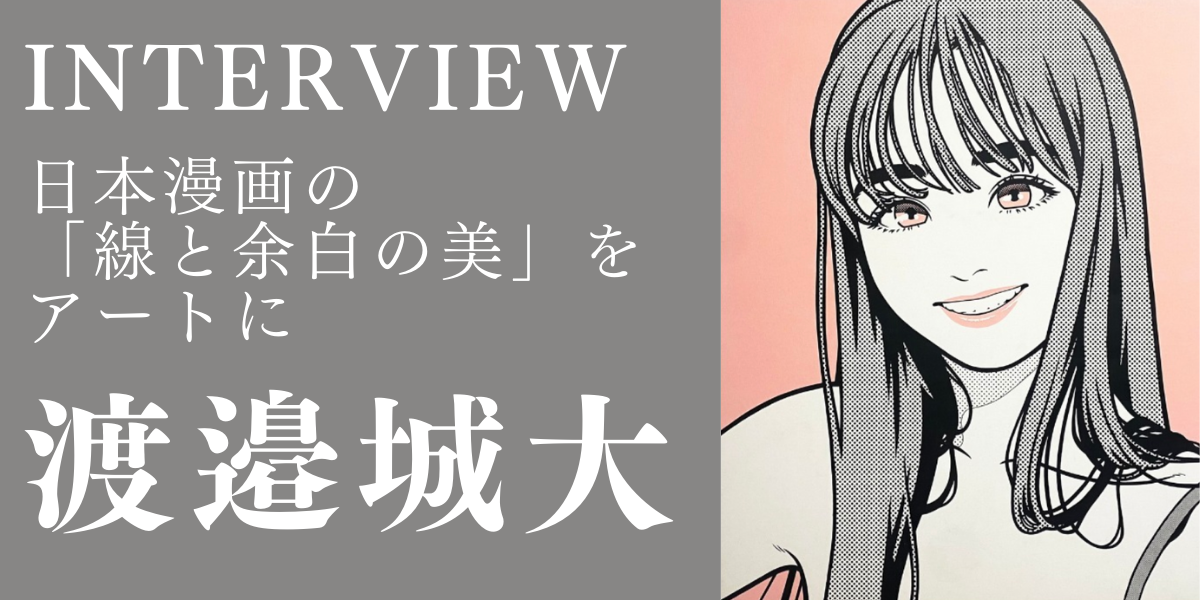
Jodai Watanabeis an artist who will participate in the three-person exhibition"Spring Makes Me Meet You" at 9s Gallery from April 13 to 20.
He is an artist who continues his practice of incorporating Japanese manga into art. At the exhibition, he will present a series of works entitled "JD-girl.
In this article, we interviewed him focusing on the process of becoming an artist after working as a manga artist assistant and his thoughts on Japanese manga.
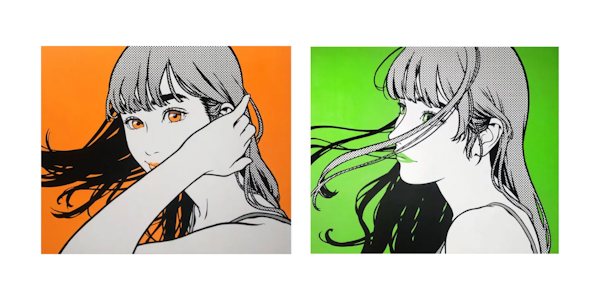
Born in Ehime, Japan in 1983.
After working as a manga artist's assistant, he began creating paintings using Japanese manga techniques and taking nature photographs, mainly of starry skies, by climbing mountains.
After working as a manga artist, he entered the art world
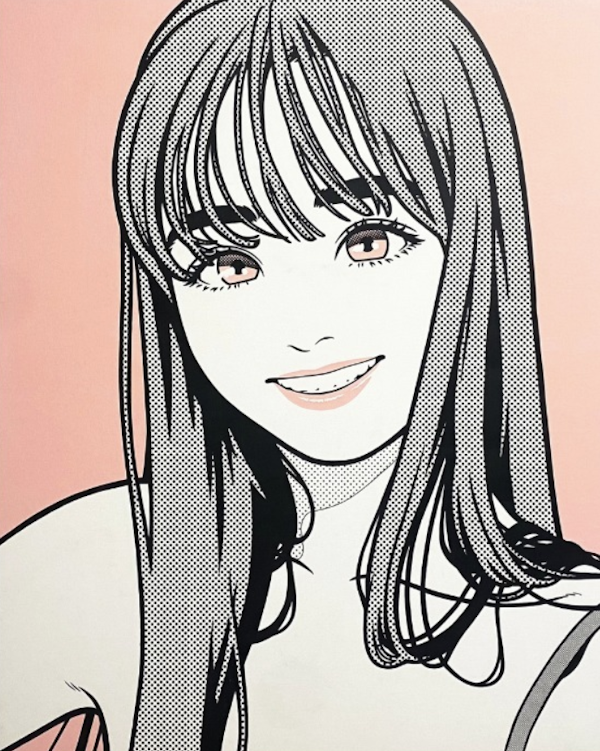
《JD-girl_009》
-First of all, please tell us about the process of your career as an artist.
At first, I wanted to be a manga artist. When I was in the first grade of elementary school, I saw the "Dragon Ball" anime and bought a copy of Weekly Shonen Jump, which apparently has a manga based on the original.
That is how I started aspiring to be a manga artist.
I had always liked drawing pictures, and I had a longing to be a landscape painter, copying pictures from insect books and watching "Bob Ross's Painting Class" on TV.
Then one day, I came across manga and was impressed by the idea that a manga artist, who also thinks up stories and draws pictures, is the most amazing of all drawing professions.
After that, there was a period in high school and college when I immersed myself in club activities and stayed away from manga, but after retiring from club activities in college, I began to get serious about writing manga again.
After graduating from college, I attended a manga technical school and was assigned to work for Weekly Shonen Jump. I was approached by the person in charge and started working as an assistant to a manga artist, and was active for about 10 years.
-What made you start your career in art from the world of manga?
While continuing as an assistant, I was drawing stories with the aim of serializing them, but around the third year, I realized that I was not suited for serialization in a commercial magazine.
In a manga production environment, you have to complete a manuscript to meet a tight deadline, and it is physically impossible to draw a picture that you are 100% satisfied with every time.
I realized that as long as I was working on manga, I would never be able to create a single picture that I was satisfied with in my entire life.
So in my 3rd~4th year as an assistant, I quit drawing my own manga and instead became absorbed in climbing mountains and photographing the starry skies.
If I wanted to take beautiful pictures of the starry sky, I had to plan my climb in detail, taking into account the direction, the age of the moon, and so on.
Therefore, I was extremely moved when I was able to take a picture that was exactly what I was aiming for.
This was linked to my childhood desire to become a landscape painter, and the travel and adventure involved in the process made me feel as if I had become the main character in a comic book, which is what I really wanted to do.
Several years have passed since I stopped painting outside of work, and I suddenly realized that I could not imagine a life without painting at all.
I wanted to make use of the manga skills that I had been drawing for more than 10 years, otherwise there would be no point in my drawing, so I started to experiment and see if I could create a new artistic context based on manga while referring to the history of art.
Creating New Expressions from "Contemporary Ukiyoe
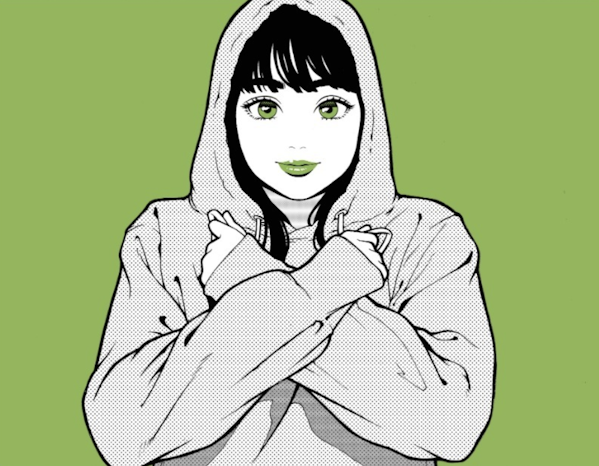
jd-girl_hoodie-01
-Mr. Watanabe, you define "Gendai Ukiyoe" as "the use of Japanese manga techniques to depict the present day.
The term "manga" was first used in the Edo period by the writer Santo Kyoden and the ukiyoe artist Katsushika Hokusai.
Hokusai, in particular, published about 15 volumes of a book called "Hokusai Manga" and was a pioneer in the very genre of manga.
Therefore, we believe that manga itself evolved from Ukiyoe.
Ukiyoe was created by people in the Edo period using the art materials of the time to depict what was going on at the time, so I position "modern ukiyoe" as the use of manga that evolved from ukiyoe to depict the current era.
Therefore, I have worked on the 《JD-girl》 series on the theme of beautiful women, and a series inspired by yakusha-e (portrayals of actors) and based on movies.
-What do you find attractive about manga?
I think it is the evolution of a unique style, such as the beauty of the lines and margins, and the fascinating composition of the screen using only two colors (black and white).
Japanese manga, along with American comics and bande dessinée (BD)*, are known as one of the world's three major comic book genres.
But I think Japanese manga is distinct from American comics and BD.
American comics and BD are basically in full color and written horizontally, while Japanese comics are mainly in black and white and written vertically. If one tries to draw a dynamic screen using only black and white, one has no choice but to push the expression of the line.
I am sure that the reason why Japanese manga is mainly in black and white is due to the fact that it developed as a valuable entertainment in the postwar period when supplies were scarce, but I believe that the most appealing aspect of manga is that it developed its own unique expression within such constraints.
That is why I believe that new artistic expressions can be created by using Japanese manga techniques, and that is the goal I would like to reach.
*Bandes dessinées: Comics drawn in France, Belgium, and other countries. Famous works include Elgier's "The Adventures of Tintin," Mobius, and Enki Bilal.
《JD-girl》: Pursuing the "beauty of lines and margins" in comics.
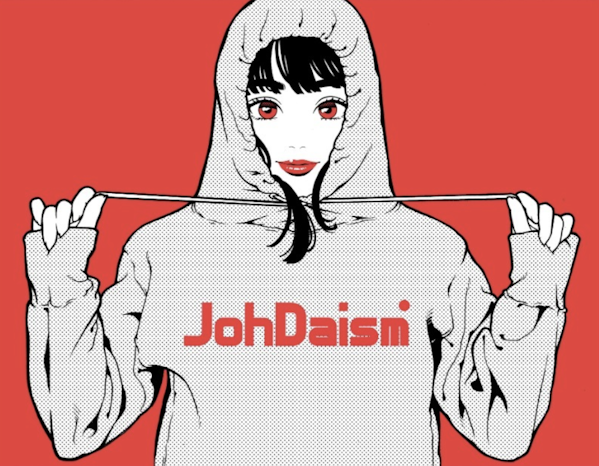
JD-girl_hoodie-02
- What is the theme of "JD-girl," which you are showing in this group exhibition?
JD-girl" is a work based on the theme of ukiyoe paintings of beautiful women, and depicts a woman in the image of a manga heroine.
I think that in many cases, manga is created in such a way that the story develops based on the character setting, as if the character will move in this way.
In the same way, "JD-girl" was created by first determining the character's setting and then drawing the poses and facial expressions that were imagined from that setting.
The black-and-white + one color composition is also impressive.
Like the screen tones of a comic book, the black is arranged like amidst the dots to express shading.
Screen tones are an essential technique in Japanese manga for achieving black-and-white expression, and I myself am very fond of this technique.
I basically draw by hand, and for the dots, I use "silkscreen tones," which are original materials made by silkscreening screen tones, to reproduce the drawing technique of manga.
We often receive comments that "I thought it was all silkscreened editions," but since the manga itself is designed to be printed, it is intentional that the "finished product looks like a print".
I believe that by eliminating unnecessary matiere and making the work flat, the meaning of the lines and margins is emphasized.
Furthermore, in "JD-girl," by using color in the blank areas of the background, I applied color psychology to help the viewer imagine the feelings of JD-girl.
I try not to use colors that are out of keeping with the expressions and emotions of the people depicted in the paintings, but I do try to draw some color variations to see what impression the colors give.
-What is the difference between canvas and paper in terms of production?
The biggest difference is that the canvas can be larger than the paper.
Paper cartoons are usually viewed from a distance of 20 to 30 cm from the viewer's face.
So, personally, when I use paper as a support, I want to follow the B4 size for manga manuscripts or the B3 size for spreads.
Canvas, on the other hand, is by default hung on a wall and viewed from several meters away.
So I have the advantage of being able to create works at a much larger size than on paper.
However, when I paint on canvas, I consciously change the thickness of the strokes and the method of deformation so that the pattern can be recognized even at a certain distance.
There are several "JD-girls" in the "JD-girl" series, aren't there?
When I was an assistant, I was often asked by my supervisor to draw the heroine in a cute way, but there is more than one way to make a heroine cute.
Whenever I got stuck on a name, I would think about how to make it cute.
So, I wanted to make JD-girl cute in various ways, and I drew many variations of her, drawing the results of my research when I was an assistant.
-Do you have a message for those who will see your works in the group exhibition?
It is a little different from a message, but it is a point that I always keep in mind to create my works so that people who see my works will not just pass by thinking, "It's just a quick illustration of a cute woman," but will see it as art.
I hope thatafter learning about the statement and concept, the viewer canimagine the meaning of the lines, margins, and colors, and the depth of the work from there.
Ultimately, I still want to delve into the expression of lines and margins.
Since "JD-girl" is my first series of works on canvas, I have stripped it down considerably to a simple canvas.
However, the meaning I put into the lines and margins becomes clearer when contrasted with other elements such as the background, so eventually I will create such works.
In the series I will be working on in the future, I will try to use ukiyoe genre paintings as a motif, so I hope that those who liked "JD-girl" will continue to watch my activities.
Group Exhibition Outline
Spring will make me meet you
Exhibition Dates: 2024/4/13 (Sat) to 2024/4/20 (Sat)
Opening hours: 12:00 - 20:00
Opening party: 4/13 (Sat) 18:00 - 20:00
Last day: 17:00 CLOSE
Closed: 4/14 (Sun), 15 (Mon)
Venue:9s Gallery by TRiCERA
The Wall 3F, 4-2-4 Nishiazabu, Minato-ku, Tokyo 106-0031
Access: Tokyo Metro Hibiya Line Roppongi station 10 min. walk, Hiroo station 10 min. walk
10 minutes walk from Nogizaka station on Tokyo Metro Chiyoda Line
Contact: 03-5422-8370
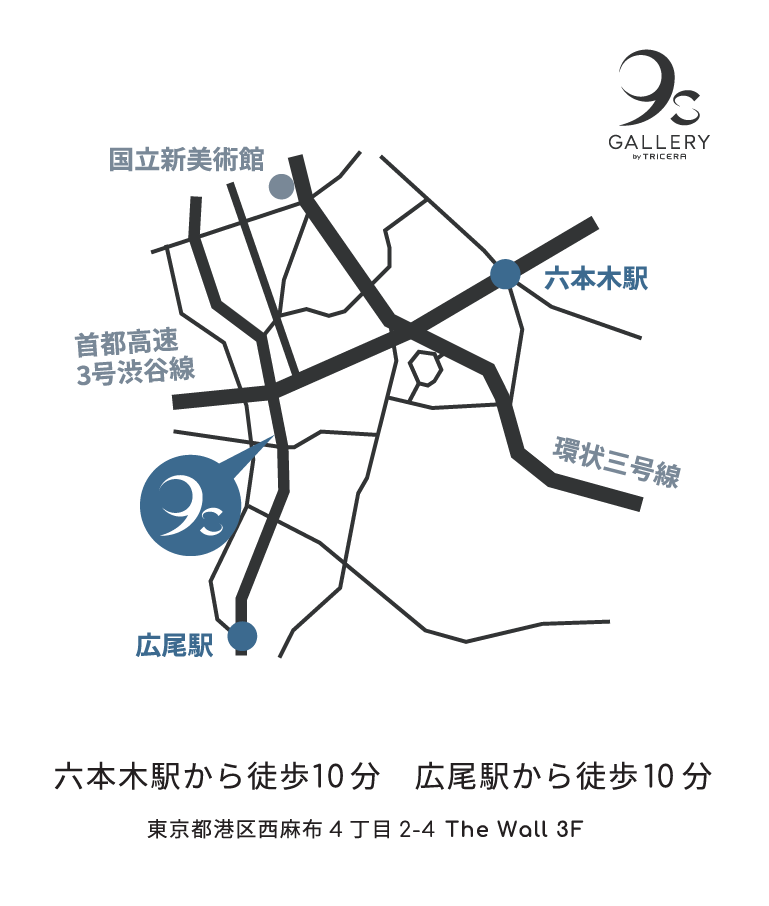
For inquiries about the exhibition, please contact us here